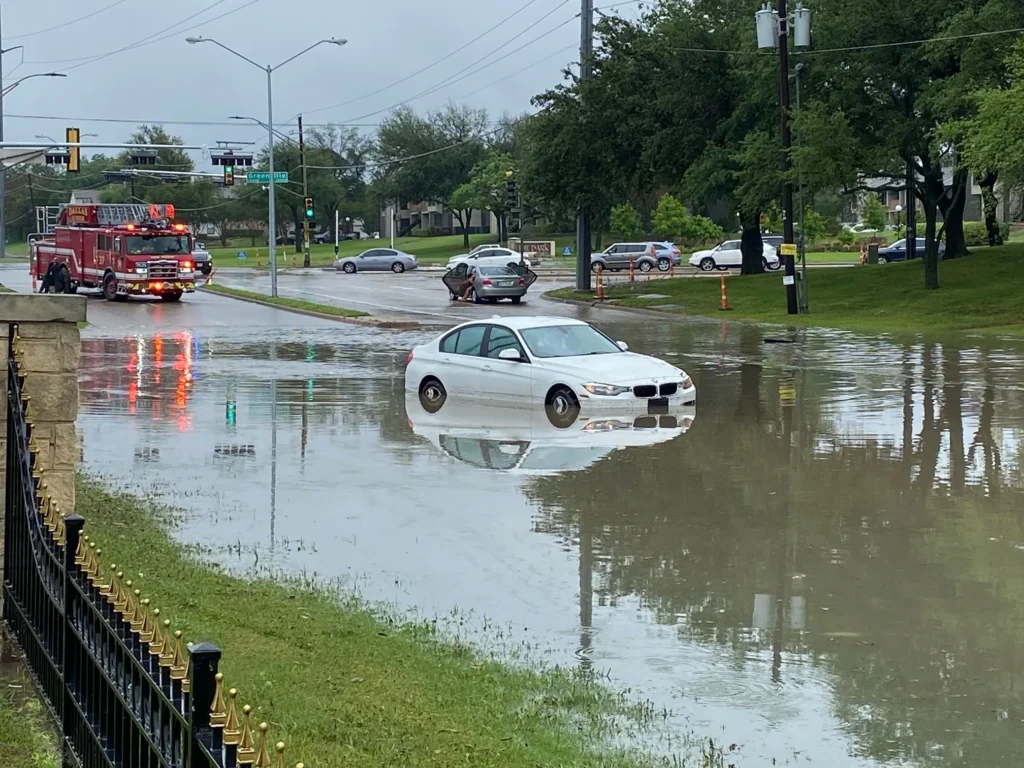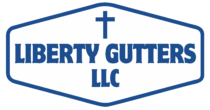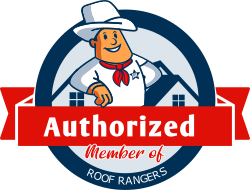How We Resolved a Major Drainage Challenge in Dallas
We at Liberty Gutters LLC are dedicated to protecting your home from water damage. Among the biggest drainage challenges we’ve encountered recently in Dallas, a city known for its intense downpours and wide impervious surfaces. This particular case study demonstrates how our team went from diagnosing the issue to implementing a solution. Our objective? To turn a risky property into a dry, stable and resilient space that can withstand future storms.
Diagnosing the Drainage Problem in Dallas
When the homeowners first contacted them, their yard appeared in distress. Water was pooling in low-lying areas after storms, gutters were overflowing and the foundation looked damp despite the fact that the last rainstorm ended days earlier. Our team conducted a site evaluation to figure out what was happening :
Roof-to-yard water flow inspection:
We mapped out where rainwater left roof gutters and downspouts and where it entered the yard and found that existing gutters were insufficiently sized and discharge points directed water too close to the foundation.
Topographical survey:
We assessed land slope and elevation changes and determined the property sloped toward the house – opposite of what it needed.
Tests of soil permeability:
Compact and clay-heavy subsoil did not absorb water, so surface water lingered longer than expected.
Checking infrastructure:
We checked sanitary sewer lines for backflow during storms, municipal stormwater context, and for signs of regional drainage constraints common in older Dallas subdivisions.
What became apparent was that we had a layered problem: external water from the roof, external overland flow exacerbated by improper slope and local infrastructure limitations, all contribute to persistent saturation.
Recognizing the Signs of a Serious Drainage Issue
Understanding the interrelated factors associated with determining the scope of the problem is essential:
Flooding:
Even heavy rainfall events in Dallas – sometimes dumping several inches in a day – can overwhelm poorly designed drainage systems. In this case, rainwater was collecting in the yard and draining into the crawlspace and underdeck areas.

Overflowing sanitary sewer:
Though less common in residential properties, heavy rains can overwhelm combined sewage/stormwater systems. Backups introduce contaminants and odors into piping, which can be harmful to health and structural integrity.

Aging local infrastructure:
Many Dallas neighborhoods were developed decades ago with basic surface run-off management. Stormwater runoff from streets, roofs, and driveways often fed poorly-maintained ditches or undersized municipal drains.

Impervious surface prevalence:
So concrete driveways, sidewalks, patios and large roofs limit how much rain can fall on the ground. In case an inch of rain falls on a 2,000 sq ft roof, that is over 1,200 gallons of water your drainage should carry in minutes.
Foundational impact:
Water creeping toward or under foundations lifts soil, exerts hydrostatic pressure on walls and – eventually – cracks, moisture intrusion or mold and mildew.

By understanding these signals, the homeowners realized the problem was not just aesthetic – it was structural. Left unattended, the scope of repairs and foundation failure were real possibilities.
The Real-World Impact of Poor Drainage
When drainage fails, the effects spread across a property – and beyond:
- Landscape Damage: Waterlogging drowns plant roots, turns lawns into mud pits, and erodes sculpted garden beds. Decorative rock and mulch wash away, and outdoor living spaces become unusable. Finally, the lawn slopes and contours were compromised, causing trip hazards and unsightly puddles.
- Damage at the Structural Level: When water permeates soil near the foundation, hydrostatic pressure builds. In this home, that pressure forced water through foundation cracks and under the crawlspace. Interior moisture provided a breeding ground for mold, and doorways misaligned due to framing changes.
- Infestations of Pests: Mosquitoes and other insects breed in stagnant water. Attracted to moisture-weakened wood, termites had already established isolated colonies along foundation junctures. Both presented long term without intervention.
- Health and maintenance issues: It became clear that these dangers were interconnected – so any intervention would need to be holistic, not fragmented.
Our Multi‑Tiered Solution — Step by Step
Our solution was based on a suite of drainage strategies specific to Dallas soils, rainfall and suburban landscape realities:
1. French Drains
We installed an exterior French drain system – gravel in trenches with perforated pipe at the bottom wrapped in filter fabric. The system collects groundwater parallel to the perimeter foundation and sloping to daylight or a storm drain before it pools. Gravel helps with infiltration and filter fabric keeps soil from clogging the pipes.
2. Gutter and Downspout Extensions
Next, we added high-capacity 6-inch gutters to replace older 5-inch gutters. Downspouts were outfitted with 4-inch pipe extensions and directed away from the foundation toward gravity-fed drainage trenches or a storm clean-out. This step alone prevented hundreds of gallons of runoff from getting into the soil near the house.
3. Grading and Sloping Rework
We re-contoured the yard and added some light grades away from the structure – typically 2-5% (14-12 inch drop per foot). In the low areas we used engineered fill to fill in soil levels and avoided “bathtub” depressions. The goal: all surface water would flow away, not toward the home.
4. Supplemental Drainage
- Dry Creek Beds: Channels with shallow, stone-lined banks mimic natural drainage. They provide a path for runoff and prevent soil erosion as water flows to collection zones.
- Sump Pumps: In a gravel-lined pit, we installed a submersible sump pump for areas that are naturally low or where gravity can not pump water far enough. The pump has a battery backup for operation during power outages.
- Catch Basins: These recessed boxes collect runoff at critical points such as paved surfaces or driveway low points. Their drop in lets debris drop out before it clogs underground drains.
5. Further Considerations for a Full Fix.
- Erosion Control: We stabilized disturbed areas with turf reinforcement mats and native grass seeding to prevent washouts and topsoil integrity during seasonal storms.
- Soil Health Improvements: The compact clay-heavy soil would not absorb well despite structural fixes. We spread porous topsoil amendments and planted deep-rooted groundcovers to improve infiltration over time.
- Landscape Integration & Aesthetic Design: Native gravels, drought-tolerant shrubs, and ornamental grasses lined dry creek beds and sump pump discharge zones. This incorporated functionality and curb appeal for a finished look homeowners could appreciate.
Measurable Outcomes and Long-term Benefits
The results were visible when the last stone was laid:
- Elimination of Surface Puddling: Rainfall events of up to 3 inches/hour no longer created standing water in the yard or near the foundation.
- Dry Crawlspaces and Foundations: Moisture meters read less than 10% relative humidity in the crawlspace – well below the mold growth threshold.
- Better Aesthetic and Property Value: The dry creek bed became the focal point, turning erosion signage into landscaping appeal – a return on investment.
- Future Proofed Drainage: All system components were provided with collapsible cleanouts and backflow safeguards to facilitate future maintenance.
The homeowners regularly report that even big storm events are now without drama – and they sleep better at night.
Lessons Learned & Best Practices
- Comprehensive site assessment is required. Roof runoff, soil permeability, slope, and local sewer context are often the right piecemeal fixes.
- Integrated design is better than single tactics. French drains, gutter extensions, grading and landscape interventions all work together. Ignore one, and you risk compromising the whole system.
- Match strategies to climate. Dallas’s intense, sudden rainstorms and clay soils call for high-capacity systems. Under-capacity installations fail quickly.
- Blend function with form. Dry creek beds, catch basins and carefully planned plantings provide drainage and add curb appeal.
- Maintenance matters. Gutter cleaning and catch basin checks as well as periodic sump pump testing keep everything in good condition long term.
Conclusion
In a city where heavy rainstorms mix with clay soils, ignoring drainage issues is a bet you don’t want to make. With a plan that included French drains, gutter enhancements, slope rework and smart landscaping, Liberty Gutters LLC turned a water – infested property into a resilient space.
This case study demonstrates our commitment to providing holistic solutions that protect homes, care for landscapes and add value. For those with similar issues – saturated yards, wet foundations or recurring puddles – reach out. We’ll analyze your site, create a custom drainage plan and bring back your peace of mind – rain or shine.
Frequently Asked Questions (FAQs).
What was the drainage issue in Dallas?
The issue involved severe flooding and water pooling in a residential/commercial area due to inadequate drainage infrastructure, poorly graded land, and heavy rainfall events.
What caused the drainage problem?
The primary causes were outdated stormwater systems, clogged drainage channels, and improper slope grading that directed water toward buildings instead of away from them.
Who identified the problem?
Our engineering and site evaluation team conducted a thorough inspection after residents and property owners reported frequent flooding and water damage.
What steps were taken to assess the situation?
We performed a topographic survey, hydrological analysis, and drainage flow modeling to understand the extent and behavior of water runoff during storms.
What solutions were implemented?
We installed new underground drainage systems, regraded the land, added French drains and catch basins, and connected the system to the city’s main stormwater lines.











